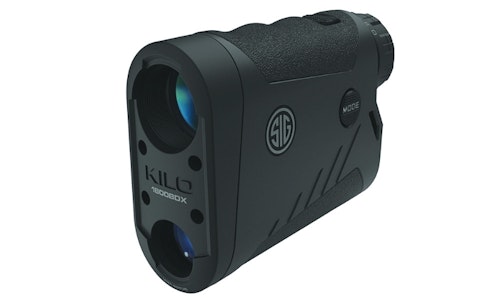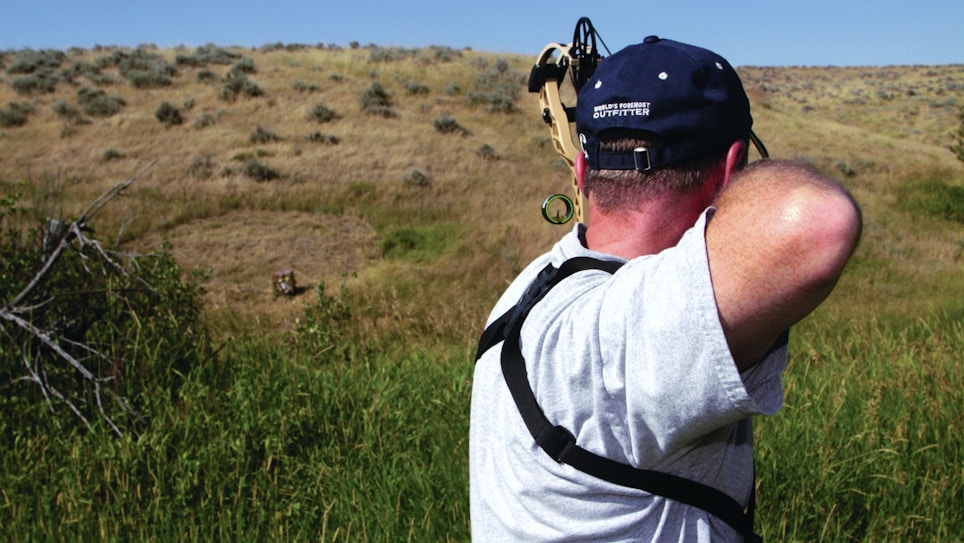
The biggest factor to consider as you think about equipment is the vastly different environment surrounding you on a hunt. Western expanses allow whitetails to inhabit areas that are as varied as the weights of these long-tailed inhabitants.
Do you daydream about bowhunting whitetails? If so, do you imagine yourself in pursuit of your quarry west of the Mississippi River? If you live out West, do you take advantage of the whitetail opportunities slowly increasing right in your backyard? The answers to each is probably a resounding, “No!”
Although whitetails have always been a western fixture, their presence has been slowly expanding due to man’s manicure of the topography. Farming practices and greenway belts of urban sprawl through valleys have helped whitetails gain an expanded foothold across a wide variety of habitats.
If you question the western roots of the whitetail, you simply need to be a student of history for a better understanding. On May 10, 1805, journal notes by Meriwether Lewis in Montana pointed out the presence of whitetail deer. At the time, they were exploring the western real estate deal of the century in northeast Montana. On that entry date, notes describe a successful hunt for “two mule deer,” and “one common fallow or long-tailed deer,” later to be identified as the Dakota subspecies of whitetail.
Today, whitetails and their subspecies can be found in all western states except Alaska, California and Nevada. You may be in a senior care center by then, but whitetails are expected to eventually reach Alaska at some point in the 21st century, thanks again to human topography enhancements. For now, western bowhunters have to look to the plains, foothills and mountains of Colorado, Idaho, Montana, Oregon, Wyoming and Washington with viable populations to pursue. And if you enjoy a desert hunt, then don’t overlook opportunities for Coues whitetails in Arizona and New Mexico.
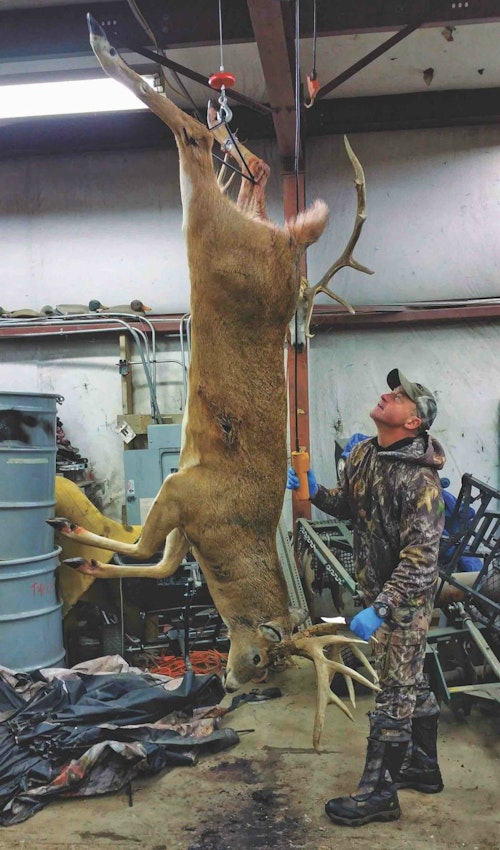
Your Quarry, Their Home
Regardless of where you chase whitetails, they might look the same, but their environment dictates a changing body style like the annual Detroit rollout of new auto models. The two subspecies you’ll likely encounter the most are the Dakota and Northwest subspecies. These also are the beefiest of the crew with weights that can top 300 pounds, especially for deer living close to the Canada border. This is referred to as Bergmann’s Rule, where body size increases with latitude for survival in colder northern environments.
But there are no hard and fast rules. Some foothills whitetails of the Rockies exhibit smaller body weights, and their cousins living in riparian zones on adjacent grasslands sport an extra 50 to 100 pounds. I’ve seen this repeatedly in my Wyoming zip code while hunting whitetails at the base of the Bighorn Mountains that are smaller than neighboring whitetails less than 100 miles away on western river-bottoms.
If you really want to see how western whitetails differ in weight, then tackle the Coues whitetail. With an average weight of 100 pounds for a buck (less for a doe), you probably won’t need a buddy to pack one out if successful. You won’t necessarily have to change your whitetail setup either, but you as you begin to ponder options for archery tackle, keep aspects of the hunt front and center.
The biggest factor to consider as you think about equipment virtually surrounds you on the hunt: the different environment. Western expanses allow whitetails to inhabit areas that vary as differently as the weights of these long-tailed inhabitants. Whitetails don’t require an expanse of woods to live luxuriously as you might think of them in the Allegheny Mountains of the East. Pockets of plum thickets adjacent to grasslands and a plowed field of winter wheat will suit the needs of a whitetail herd. Ash and cottonwood creek-bottoms surrounded by miles of sagebrush also suit the needs of a local whitetail troupe. Of course, western whitetails don’t turn away from expanses of pine forests or cedar hillsides, either.
What this means for you is that bow shots can reach out to 50 yards or longer depending on your skill and daringness, but can also mimic the 20-yard average experienced by the bulk of whitetail bowhunters. Do you stick with the typical whitetail setup or tweak it for a true western experience? Answer that question with how much of the West you hope to experience, and then add in a little math.
Yep, There’s Math Involved
Western whitetails offer you one opportunity for a great cowboy bowhunting experience, but what if you want to experience it all? Pronghorn and mule deer have similar or smaller body characteristics to whitetails. An upgrade or change in gear is not necessary to add one of these species to your list if licensing allows. In some states such as Wyoming, Montana and South Dakota, it’s easy to combine both species on one hunt if you clear the draw hurdle.
These species aside, the real question arrives if you want to add elk to your shopping cart. Bowhunting tackle for elk requires a second thought to ensure you have the “right stuff.” Elk are big animals, and you’ll realize it the first time you have to pack one off the mountain. They are the second largest member of the deer family in North America, second only to moose. Cow elk can push the scales to 650 pounds, and bulls can exceed 800 pounds. For perspective, it means you are dealing with an animal at least four times as large as the average whitetail buck.
Of course larger bodies mean everything else is also larger. You do have a larger vital zone to aim at, but miss it and you have to deal with a thicker hide, a bigger paunch to punch through on angling shots, and larger shoulder and leg bones. They can be as effective at stopping arrows as law enforcement body armor stops bullets from bad guys.
The next aspect to consider is distance. New technology allows archers to shoot farther and with more accuracy than ever before. Those long shots can come in handy in the openness of the West, but it comes with a price. Longer shots do increase the likelihood of a poor hit. When you combine buck fever with unanticipated animal movement or environmental factors, such as a gust of wind, your arrow could hit off target. Remember, your arrow is traveling 10 times slower than a bullet, so it takes longer to arrive and less energy to nudge it away from your aiming point. You also have to consider the loss of kinetic energy during long-range flight. That same kinetic energy plays a role in your entire setup. Here’s why.
Although modern bows transfer energy better than ever before, you still need a certain amount of kinetic energy to cleanly take deer and especially elk if you opt for that combo. Kinetic energy is computed through a mathematical formula. To determine your bow’s kinetic energy, take the velocity squared and multiply it by the weight of your hunting arrow. Now, divide that result by 450,240 and you end up with a number equaling the kinetic energy of your propelled arrow.
Your velocity — measured in feet per second — is your arrow’s speed and can be determined by shooting your arrow through a chronograph at your local pro shop. Your arrow’s weight can be measured on a grain scale, and remember to include the broadhead weight. This math ensures you have ample kinetic energy for the game you’re pursuing, regardless of the broadhead you use. Keep in mind, however, that most mechanical broadheads utilize additional energy to deploy before cutting. For deer-sized game, most experts recommend your bow should produce in the range of 30 to 50 foot-pounds of energy. When you jump up to the elk category, 50 and above is highly recommended for success in swathing a lethal pathway. Most new bows in the 50- to 60-pound draw weight should meet this challenge, but don’t expect an old-school compound from the 1980s to do the same.

Arrows Away
Going back to kinetic energy: You have to keep in mind that the weight of your hunting arrow also helps drive home a successful shot. Without getting too technical, a middle-of-the-road arrow will suffice as a do-all arrow. Most hunters gravitate toward carbon construction for their arrow, and the weight of the arrow differs depending on your draw weight and draw length. A heavier draw weight requires a stiffer arrow selection.
Smaller diameter arrows are the rage and may be up for consideration. Their slimmer profile amplifies penetration and less surface for wind to push around. Smaller vanes also have a smaller profile and thus less effect from wind, especially on a longer shot. All of these factors play a role in western hunting, particularly if your area is prone to longer shots. In brief, choose an arrow that flies well with your hunting broadhead and produces the kinetic energy you need for whitetails or an add-on elk hunt
As for broadhead selection, you need to hunt with a head that gives you confidence.
Your arrow vanes help in stabilization, but the wide blades of a fixed head sticking out in front of the vanes may have a tendency to veer off target. Because of this, you may opt for an easier to tune mechanical broadhead. They’ll work equally well between whitetails and elk, but keep in mind a mechanical broadhead requires additional kinetic energy to deploy, robbing some of the energy needed for penetration. If you’re shooting a 70-pound draw weight, it likely doesn’t matter, but if your energy calculation is at the bottom end for elk effectiveness, a razor-sharp fixed-blade broadhead may be the answer in case you have to tackle an extreme angling shot on a big bull.
Regardless of your marketing attraction, it’s razor sharpness that gets the job done with either style of head. Broadheads kill via hemorrhaging, so to create the most bleeding possible they have to be finger-slicing sharp. Kinetic energy won’t help you if you try to punch a butter knife instead of a scalpel through a buck.
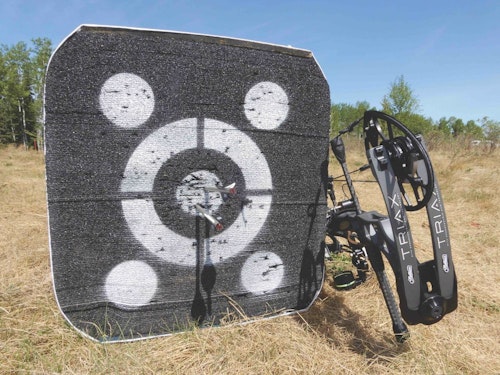
Long-Range Accessories
With your bow sporting the foot-pounds of energy to tackle a western whitetail and even an upgrade to elk, it’s now time to sight in. Bowsights are a personalized purchase. Two schools of thoughts oversee most bowsight acquisitions today: multi-pin and single-pin construction. The leader continues to be the multi-pin bowsight, but it’s not necessarily the best choice for the West. The main reason bowhunters embrace the multi-pin sight is the fact the pins are fixed and sighted at predetermined distances. In the heat of the moment, you don’t have to worry about adjusting a single pin, particularly for shots beyond 40 yards. It’s a whitetail hunter’s perfect companion.
Still, shots trend a bit longer out West, depending on the setting and thus single-pin sights have been garnering market share. Here’s why. You sight the single pin in for 20 or 30 yards, but an elevation adjustment knob allows you to move the pin for longer shots noted on an easily read yardage dial while you prepare for the shot. Most hunters I talk to don’t adjust until shots of more than 40 yards present themselves. Out to 40 yards, they simply shoot slightly high or low using the stationary pin based upon the trajectory of their arrow. Their flat-shooting bows allow them this luxury. Combine the single pin with a smaller diameter peep sight and you have an accurate shooting system. It’s something to consider if a new bowsight is in your budget. You can also opt for models that combine the best of both: stationary pins and a movable pin. In my opinion, the leader in single-pin sights continues to be HHA Sports with various models to match your bank account.
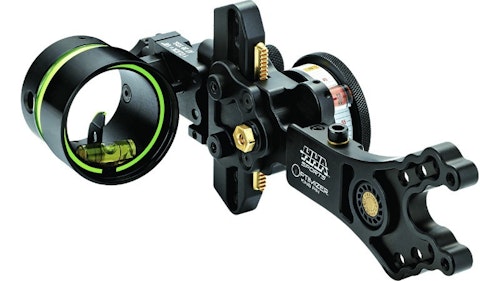
Bow rests have a few less options, and I prefer one of two options. The simplest rest is the containment rest best represented by the Trophy Ridge Whisker Biscuit. Stiff bristles hold your arrow snugly, yet launch it with surprising accuracy. For no-nonsense accuracy in the 20-yard department, you can’t miss. Nevertheless, for extreme accuracy often required out West, the drop-away styles of rest offer precision launches. Models such as those from QAD lock your arrow in place in case you need to make a short move, yet zip out of the way to prevent contact with your fletching when shot.
If you’re thinking I am not going to mention bows … you’re nearly right! Even more personalized than all the other selections combined, what bow you choose is contingent on everything from ergonomic fit, speed, overall size, weight and even the bow cult you follow. A medium-length bow with a forgiving brace height of 6 inches or more will hoist nicely into a towering cottonwood or slip easily through cedars during a stalk. Look to models that are speedy at 340 fps IBO-rated or faster, yet quiet due to new technology. Bowtech, Elite, Hoyt, Mathews, PSE and Prime, to name a few, all offer bows that will work in your whitetail favor out West.
Sidebar: Sig Sauer KILOBDX Rangefinder
One thing most blue-collar bowhunters appreciate is saving Franklins. One way to do that is to combo up when considering upgrades to optics, and Sig Sauer offers an excellent pairing. The KILOBDX series of laser rangefinders is a solid option with four models giving you precise distance ranging from bow distances to even 3,400 yards on a highly reflective target. Expect 1,400-yard lock for deer and other game species on the top end KILO2400BDX model.
What really stands out on a KILOBDX rangefinder is the fact you can also use it for extreme proficiency if you jump to a rifle hunt. The KILOBDX rangefinders are designed to pair with Sig Sauer riflescopes, too.
BDX stands for Ballistic Data Xchange, and the technology includes trajectory data transmission between a Sig Sauer BDX rangefinder and a Sierra model compatible riflescope. Wireless, Bluetooth technology enables the data to be shared between the two properties. Trajectory and windage details are sent to the riflescope, and the illuminated reticle automatically adjusts out to 800 yards. HyperScan Technology provides four range updates per second in scan mode, while RangeLock reports the last range result when ranging distant targets in scan mode. An advanced LCD display provides a smaller, extremely precise targeting circle along with ballistic information, including elevation and wind holds, angle of incline, target mode and your Bluetooth connectivity status.
For the crossover hunter who appreciates the silence of a bow, but the efficiency of a firearm, it’s a win-win.
